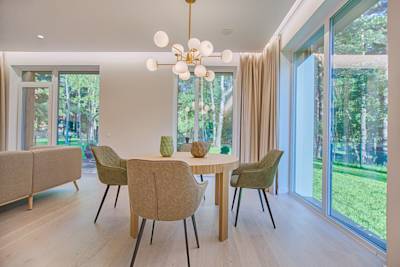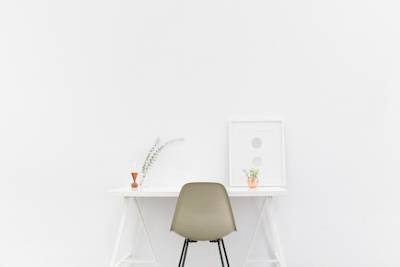
The Real Estate Agent's Guide to Home Staging
Everything You Need to Know About Staging a Home to Sell

Everything You Need to Know About Staging a Home to Sell

Jacqueline Kyo Thomas
Let's talk about home staging.
Now, you may be thinking, What's the point of home staging? After all, you're a real estate agent, not an interior designer. Your job is to sell properties, not to decorate them. But here's why home staging is an essential part of the selling process:
Staging makes a home more attractive to buyers. Whether you’re making use of existing furniture or bringing in new pieces to create the right impression, staging is all about helping the buyer feel at home.
Staging also reduces “empty box syndrome.” When presented with an empty box of a room, most buyers feel overwhelmed and unsure. What's the purpose of the space? How would I arrange my furniture? Will my furniture even fit?
And then there’s the matter of a home that’s completely personalized to the current homeowner’s tastes. When confronted with this scenario, many buyers can't see past changeable design finishes in a space, such as the paint color or floor covering. This becomes your problem when buyers automatically dismiss a home because they can't imagine themselves living in the space.
No doubt about it: Staging is essential to selling. In this post, we’ll discuss the benefits of staging along with how to stage at home, whether you’re working with a certified stager, advising a homeowner, or doing it yourself. Let’s get started.
How do you convince the homeowner (or yourself) to invest in home staging? Here are the top reasons to go with this option:
First impressions are everything. It only takes 10 seconds for a buyer to decide whether or not they love the home. Those 10 seconds start counting down as soon as the buyer steps through the front door. If you want to wow the buyer, make sure that the first thing they see makes them feel welcomed and inspired.
Not sure the seller will go along with your fancy idea to stage? Let them know that, according to research, staged homes sell faster than un-staged homes.
Another reason to stage is that it can increase the amount that the home sells for— by up to 5%!
When buyers come into an empty place, they may have trouble envisioning themselves in the space. Staging shows them a glimpse of how to live in the home.
There are three ways to go about home staging: Hire a professional, do it yourself, or ask the homeowner to do it.
Hiring a professional will cost you between a few hundred to a few thousand dollars. The final total will depend on various factors including the number of rooms you need staged and how long you’ll need the staging services.
Don’t let money dictate whether you hire a professional stager or not. Hire a professional for the same reason you recommend FSBOs to hire you: A professional knows what they're doing. While it may cost more to hire a professional stager, it may be a better use of your resources. Your time is money, too, and if you're not confident in your staging abilities, just hire a professional home stager to do it instead.
However, if you like the idea of home staging and want to offer it as an additional service to your clients, become a certified home stager. A home staging course can teach you the principles of interior home design. Of course, you can also just DIY it by following the tips below.
The third option— asking the homeowner to stage their own home— is the scariest and not advisable. It's a rare homeowner who can re-imagine their home on their own. Most homeowners feel overwhelmed when asked to rearrange their home. They're comfortable with their space and can't see it objectively from the perspective of a buyer.
So, the third option is likely a no-go. Realistically, it’s either up to you or a professional home stager to work a miracle. That said, you can ask the homeowner to purchase items that will work well for staging their current home and also give them a head start on furnishing their new place. Purchasing items (instead of renting them from a home staging company) can save a lot of money.
Now, let’s discuss how to stage a home as a real estate agent:
Staging is not about adding as much furniture as possible into a space. Instead, a staged home should always feel spacious and open. Step one is to encourage the homeowner to stow away anything that’s unnecessary to staging. That includes personal photos, art, collectibles, etc.
Also, advise the homeowner not to simply shove the clutter into the closet. Buyers look in closets, too. Empty the home as much as possible so that buyers can get a good idea of the space.
You can’t stage without cleaning first.
When moving furniture around, you’re sure to uncover cobwebs. Hire a professional cleaning service to deep clean the home before staging. Clean every surface including the carpet. Every surface should shine, smell good, and look as new as possible.
Instead of renting or purchasing brand new furnishings, make an inventory of what the homeowner already has that can be used for staging purposes. Save money by re-using big pieces such as the dining room table and chairs or living room sofa. Don’t feel obligated to use every piece of a set. Staging is about identifying the purpose and exploring the potential of each room. It’s not about full-on decorating.

Unless you’re selling to vampires, most buyers love bright rooms. Bright rooms sell homes. So, when you’re staging, be sure to think of ways to add more light to the room. This starts with the window dressings. Sheer curtains can make a room feel airy and won’t take away the natural daylight. Also, make it a practice to open both the curtains and blinds for showings.
Switch out dim bulbs for a daylight white bulb that will flood the space with natural-looking light. Then, turn on all of the lights in the space, including overhead, task, and even the fireplace (if applicable). This will help the room feel warm and inviting.
After you’ve cleared out the furnishings, but before you actually stage it, take photos of the space. This will help you if you opt for virtual staging (a process where furnishings are digitally superimposed over an image). Virtual staging companies are able to create multiple options for each room to give buyers a sense of space.
When you virtually stage a home, you can show different images to appeal to the wide range of needs that your buyers may have. Use these images in your targeted ads or when trying to show buyers the possibility of a space.

While neutral colors like beige, grey, and khaki may not be the most exciting color palette, they are the safest. Because you're trying to appeal to a wide range of buyers, choose a neutral color scheme that won't shock, appall, or offend, like an in-your-face yellow, or punch-you-in-the-face red.
Instead of using bold colors on the walls, bring in color with accent pieces, like rugs, pillows, and paintings.
You may not have the budget to stage the entire home, especially if it's a larger one. However, you can still stage the three most important rooms. These rooms are (in order of importance): The living room, the master bedroom, and the kitchen. If you’re working with a lean budget, don’t worry about staging bathrooms or secondary bedrooms.
How to Stage the Living Room: - De-clutter - De-personalize (remove photos, personalized artwork, quilts, etc.) - Add greenery (real plants and flowers) to make the room feel fresh - Use to-scale furniture that doesn't overwhelm the space - Arrange your furniture to emphasize conversation, entertainment, and relaxation - Open the curtains and let the light flood in
How to Stage the Master Bedroom: - De-clutter - De-personalize - Empty out the closets - Add premium, hotel-like bedding
How to Stage the Kitchen: - Clean everything, including the baseboards - De-grease the surfaces - Add cookies, pastries, or fruit on the counter - Add an eat-in table and chairs - Invest in stainless steel appliances, if the budget allows - Upgrade the entire kitchen with new hardware on the cabinets
Home staging is a worthwhile investment. Research shows that staging helps a home sell faster and for more money. Use the above tips to make any space feel like home to prospective buyers.
Before you go, check out these related posts: